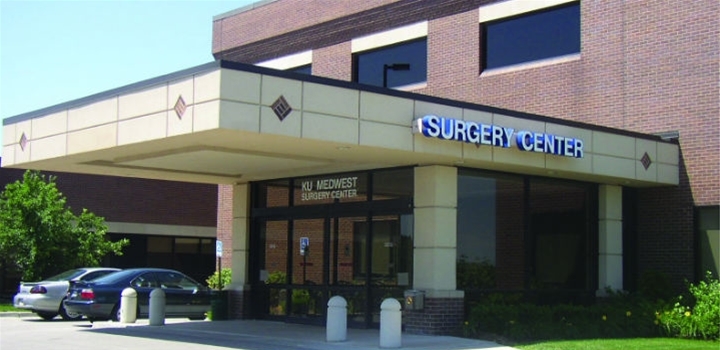This article was contributed by Lora Swenson, Business Manager at KU MedWest. If you have comments or questions, please contact Lora via email at lswenson@kumc.edu
As patients navigate the labyrinth of everyday life, preparing for ambulatory surgery can be disorienting. This is particularly true given the critical path that patients must traverse with medical history, financial cost considerations and care instructions prior to the procedure. For an ambulatory surgical center, one patient misstep can result in a case cancellation, which means lost revenue and, more importantly, dissatisfied patients and surgeons.
However, attempts to hold a patient’s hand through the process are time intensive for a nursing staff whose time can be better utilized in higher value cycles. Ambulatory surgery centers strive to ensure patients are satisfied and procedures are completed, but they lack the nursing resources to babysit every encounter. Such was the case for KU MedWest, where leading surgeons from the University of Kansas Medical Center provide advanced procedures in the comfort of a same-day ambulatory surgical center.
Looking to resolve time and cost inefficiencies, and realizing patients almost always have a mobile device at their disposal, KU MedWest invested in PerfectServe’s secure patient engagement tool that uses SMS messages to lead patients through the pre-operative process. The results are remarkable.
This article shares three specific ways patient texting is used to collectively reduce cancellations, save cost, boost satisfaction and improve outcomes at KU MedWest.
1) Overcome Pre-Admission Paperwork Hurdles
KU MedWest has long provided patients with a digital option for completing their pre-admission paperwork. Even so, pre-admissions nurses continually found that many patients did not complete the necessary forms. Nurses would then guide the patients through the paperwork and call them back after the necessary forms were filed. Given an average caseload of 450 to 500 procedures per month, KU MedWest’s nurse team was spending an exorbitant amount of time and effort on this seemingly simple step.
One of the biggest achievements realized for the patient texting initiative came with its first challenge: streamlining the pre-admission paperwork process. Through the use of the texting platform, nurses pull up their cases for the entire week at one time, assess which patients have yet to file their pre-admissions paperwork, and automatically send each patient a text reminder with a couple of mouse clicks. Once the electronic forms have been filed, the nurse can then more efficiently connect with patients as needed. No more telephone tag and no more wasted nursing time.
2) Collect Dollars Due Before Date of Service
When it comes to managing the dollars and cents of ambulatory surgical visits, Swenson stressed the importance of communicating and collecting patient payments upfront—before surgery is performed. If patients are not aware of this practice in advance, they may arrive at the facility without a means for payment.
For KU MedWest, payment confusion was a common reason for cancelled procedures. To mitigate this obstacle, KU MedWest included payment messages within their texting program. Simple text messages detailing copays and deductibles due before the date of service are now sent as part of the pre-operative messaging workflow. The message states that the estimated amount is due prior to the specific service date and includes contact information so the patient can make a payment or ask follow-up questions.
3) Provide Pre-Operative Instructions
By providing pre-operative instructions and appointment reminders via text versus phone, the information is communicated to patients in the most direct format available and is easily retrievable. Text messaging provides a simple and immediate way to reinforce important instructions prior to surgery to ensure patients are properly prepared.
Furthermore, texts can be shared with family members to assist with procedure prep and other pre-operative steps. Here are three examples of pre-operative information commonly shared with KU MedWest patients via text:
- Reminders to avoid eating or drinking after a certain time immediately preceeding the procedure
- Lists of items to bring to surgery
- Parking location and specific arrival directions
These reminders, along with other case-specific clinical information, work together to reduce no-shows, cancellations, and false alarms. The potential for late arrivals that squander valuable staff time is also dramatically reduced to avoid schedule delays and interruptions.
Texting Reduces Delays, Cancellation Rates, and False Alarms
When patients have large amounts of information to consume, they tend to feel overwhelmed and anxious. This anxiety often leads to patient inaction, which subsequently creates time waste and cost burdens for ambulatory surgery providers.
In order to negate the patient pattern of ignoring paperwork, failing to pay, and foregoing proper surgical prep altogether, ambulatory surgery centers can use text communication to make pre-admissions communications more patient friendly, realistic, and practical. This ultimately leads to an improved patient experience and creates better outcomes across the entire pre-admissions process. With consumer experience listed as the second biggest challenge facing healthcare execs in 2020 according to The Healthcare Executive Group’s Annual Top Ten, the time for patient texting in ambulatory surgery is now.

